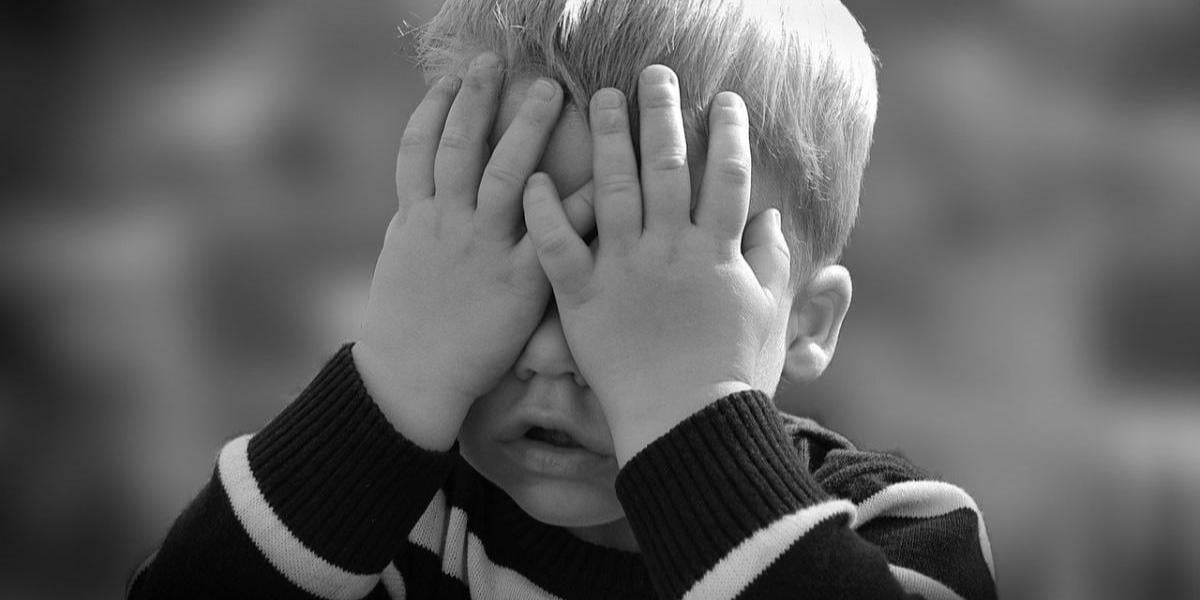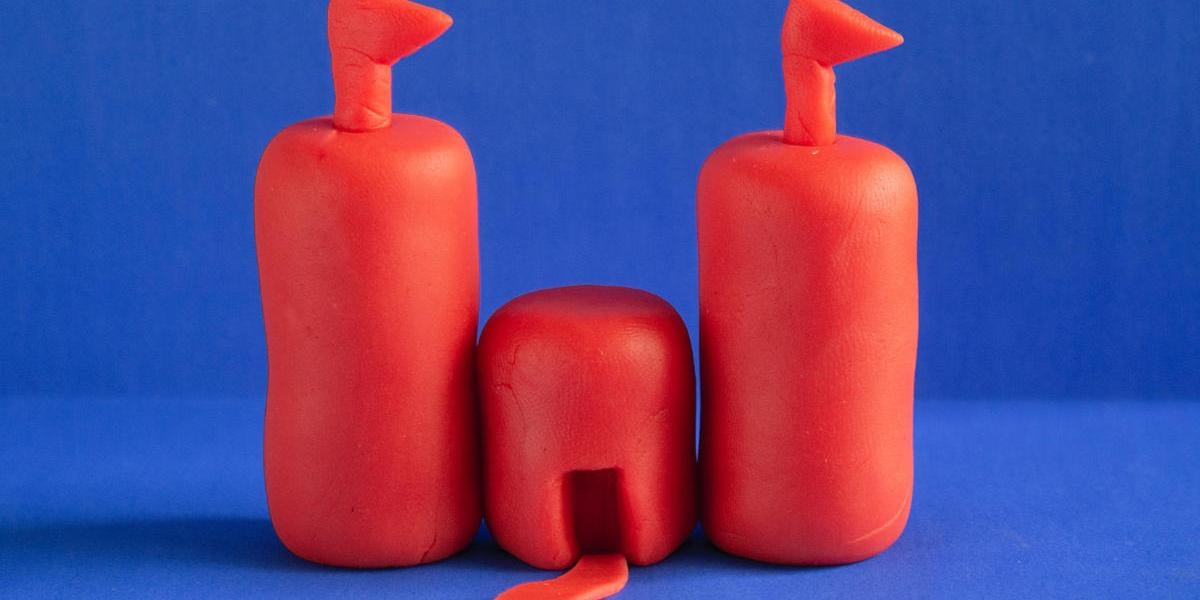I was today years old when I learned that Play-Doh contains gluten. I repeat: Play-Doh is not a brand of gluten-free play dough!
Honestly, I’m horrified to admit that I had no idea. After over a decade of living gluten-free as a celiac, you’d think that I wouldn’t make silly mistakes like this. But this is the perfect example of why you can’t make assumptions about anything when living a completely gluten-free lifestyle. You have to check the labels on everything you bring into your house.
My nieces and nephews used Play-Doh modeling compound all the time. On my kitchen table! Where I eat!
I was teaching my niece how to make a play dough snake when I accidentally knocked over the Play-Doh container. My heart sank. The back of the container says in clear black letters:
NOTICE TO PARENTS:
CONTAINS WHEAT.
I’m not even using the capitalized text to add emphasis. Hasbro capitalized this notice to inform parents, and I still missed it. Why?
Because I didn’t look for it.
I’ve never wondered if Play-Doh is gluten free, probably because play dough is not meant to be eaten. But having that mindset is a big mistake that can lead to sickness. And even after I became educated about the dangers of gluten lurking in unexpected places, I simply didn’t think to check the play dough.

You Don’t Eat Play Dough, So Why Isn’t It Safe?
Studies show that merely touching wheat can cause an allergic reaction in some people. If you’re among that group, then patting play dough pizzas is harmful if your modeling compound contains wheat.
The majority of people, however, won’t have reactions from touching the dough; the problems come when people ingest it. Individuals with a wheat allergy may go into anaphylactic shock. For people with celiac disease or non-celiac gluten sensitivity, consuming play dough containing wheat may lead to diarrhea, bloating, severe fatigue, headaches, and joint pain, which are only some of the possible complications.
Your toddler may try to take a bite out of her play dough pizza, which is why it’s best to stick to using gluten-free play dough. But even if your children are older, gluten will get all over their hands if they play with wheat-containing modeling compounds.
You know what happens next: Those hands will end up in their mouth (biting nails, wiping lips, pulling something out of a tooth). It happens to the best of us, even when we’re trying hard to keep our hands away from our face. In fact, a 2008 study found that subjects touched their face 16 times an hour on average.
And if the kids are using Play-Doh (or other play dough brands that contain gluten) while eating a snack, you’re basically guaranteeing that they will ingest gluten.
The bottom line: If you have celiac disease, non-celiac gluten sensitivity, or a wheat allergy, it’s safest to use only gluten-free play dough. Keep your family healthy by throwing away all other play dough brands that may contain wheat.
Common Allergens in Play-Doh
Play-Doh is not gluten free, but does it contain other common allergens? Here’s Hasbro’s statement on this topic:
“Play-Doh is primarily a mixture of water, salt and flour. It does NOT contain peanuts, peanut oil or any milk byproducts. Play-Doh does not contain latex. Play-Doh is non-toxic. However, children or adults who are allergic to wheat gluten or specific food dyes may have an allergic reaction to this product.”
Hasbro

Beware: Play Dough Brands That Contain Wheat
The following Play-Doh alternatives contain wheat. If you have celiac disease or are especially sensitive to wheat or gluten, these play dough brands may not be safe for your household:
- Land of Dough
- SPIEL Play Dough
- Melissa & Doug Created by Me! Modeling Dough Kit
- Cra Z Art Softee Dough
- Sargent Art Art-Time Dough
- Crayola® Dough
Brands are known to alter their product ingredients from time to time. If you have one of these products, check the label to see if anything has changed before removing the item from your home.
Likewise, if you trust certain products, continue to check their labels to make sure the ingredients continue to be wheat or gluten free.
Gluten-Free Alternatives to Play-Doh
Your children don’t have to lose out on the joy of rolling snakes and creating a tiny pink snowman just because your play dough isn’t gluten-free. Here are some gluten-free play dough brands:
(Some of these links bring us a small commission, which helps run this site, but we’d never recommend a product we don’t trust.)
- Crayola Model Magic®
- Crayola Modeling Clay
- Crayola Air-Dry Clay
- Colorations Wheat and Gluten-Free Dough
- USA Toyz Moosh Fluffy Modeling Clay
- Educational Insights Playfoam
- Jovi Plastilina Reusable and Non-Drying Modeling Clay
- Aroma Dough Gluten-Free Modeling Dough
A Note About Crayola Gluten-Free Modeling Materials: The Crayola products listed above are gluten-free, according to Crayola, but they are produced on the same machines that manufacture Crayola Dough, which is not gluten free. Here’s Crayola’s statement about this:
“Other Crayola modeling materials, including Model Magic® modeling material, Model Magic Fusion™, Modeling Clay, and Air-Dry Clay are gluten-free. These products are produced on the same machinery. Although the machines are cleaned prior to the start of each production run, there is a slight possibility that trace amounts of gluten from Crayola Dough may be present in the other modeling materials.”
Crayola

Gluten-Free Play Dough Recipe
If you have gluten-free flour on hand, a fun option is to make your own gluten-free play dough, which gives you full control over what is in it. The following gluten-free play dough recipe is credited to Parents.com.
Ingredients:
- 1/2 cup rice flour
- 1/2 cup cornstarch
- 1/2 cup salt
- 2 teaspoons cream of tartar
- 1 cup water
- 1 teaspoon cooking oil
- Food coloring, if desired
Directions:
Mix ingredients in a pot. Cook on low for about 3 minutes — stirring to prevent burning — or until a dough ball is formed. Cool, then store in an airtight container.
If you find that your gluten-free play dough is too sticky, sprinkle a teaspoon of cornstarch over the dough ball and knead it in. Don’t be afraid to add even more cornstarch, if necessary.
What we love about making your own gluten-free play dough is that it’s an activity the kids can help with. Plus, they can choose the colors that interest them, which they’ll love to do.
Have Fun With Gluten-Free Play Dough
Learning that Play-Doh is not gluten free was an important reminder to stop assuming that products are safe. You never know where gluten can be hiding. If you must avoid wheat or gluten, then you need to take the time to do your research before eating something or allowing it in your home.








